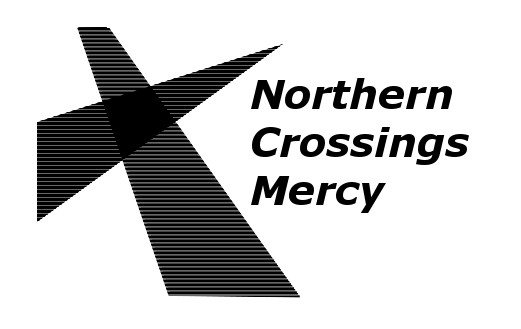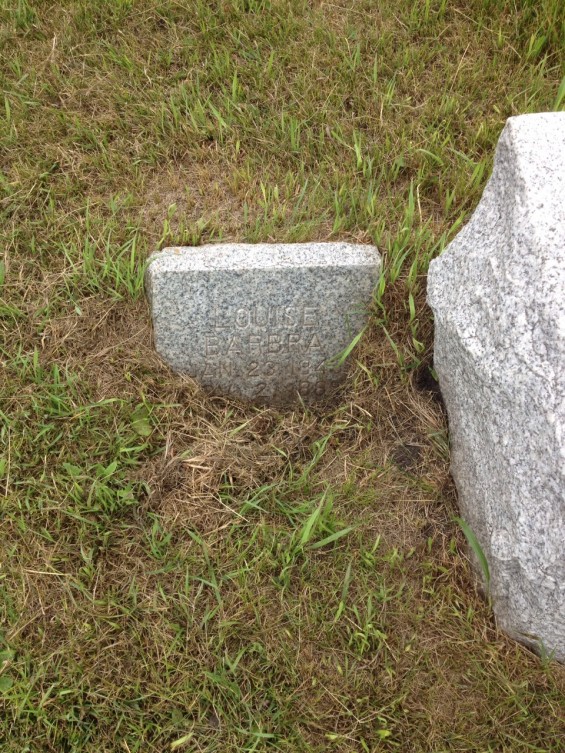After I preached at Immanuel, Radium and blogged about it (see July 15 blog) I received an e-mail from Kathy Rath who is one of the Schumacher clan that come up in these pages from time to time. This is what she sent –
Below are some family history notes from dad’s side of the family. My grandmother Louisa Loeslie Schumacher (my dad’s mother) grew up (grade school years) at Radium MN. The notes below show that her mother Louisa Loeslie (same name) was the first to be buried at Immanuel Lutheran Cemetery at Radium:
“Their mother Louisa Barbra Loeslie died that fall, Nov. 2, 1889 at age 46. Her stone marks the oldest grave in Radium Cemetery, now called Immanuel Lutheran Cemetery. This one-acre plot was land owned by the Loeslie family and donated for local cemetery.”
The connections alone are fascinating but there is a lot going on here. First the connections. I know of at least three families that have relatives still going to Immanuel that are from my churches of Grafton (Zion) and Drayton (Trinity). The familes are the Horters and Schranks at Grafton and the aforementioned Schumacher connection at Drayton. There is about 60 miles of distance between these North Dakota churches and Radium. That is by road, not as the crow flies. My interest is in the Radium church and how it started. There is no town there anymore. Radium ceased to exist. How did all of these small rural churches rise up and why? Here is a great “mission” and mercy and life together story.
If I am correct these congregations up here in the North Country can be traced back to a man one year out of seminary. Here is a story that comes out of Montana.
In the spring of 1883, Rev. Adolph Pfotenhauer was finishing his first year in the ministry, making a survey mission journey in Minnesota. He was accompanied by his brother, Rev. Frederick Pfotenhauer. In the Red River Valley area, a woman (and her child) from Miles City, Montana was visiting her sister in Minnesota. The child was baptized, and the mother requested Pastor A. Pfotenhauer to see what could be done for “the very many Lutherans who were moving into Montana and were there being scattered as sheep without a Shepherd.” The information reached the Missions Commission of the Minnesota – Dakota District of the Missouri Synod. Many immigrants were moving westward to the Montana Territory, and a 400% population increase occurred east of the Missouri River between 1880-1885. A report was given by Rev. A. Pfotenhauer to the Minnesota – Dakota District, and a budget of $4,000 was made in 1884 to subsidize thirteen “Reiseprediger” (traveling preachers) in the district.
In 1884, Rev. Herman Glaess, a 25-year-old Reiseprediger from Perham, Minnesota, served a parish 240 miles long with twelve preaching stations from Brainerd, Minnesota, to Jamestown, North Dakota. Born in Germany and a graduate of Concordia Seminary, St. Louis, his parish ran along the route of the Northern Pacific Railroad. The full extent of this line had been completed on September 8, 1883, running directly from his parish to Helena, Montana, as a through line to the Pacific Coast. Glaess was commissioned to make a Montana trip to investigate the mission possibilities, and to serve with Word and Sacrament whatever German Lutherans he might find. In March of 1884, Glaess was among the first Lutheran pastors of any synod to enter Montana on an official mission for the Lutheran church.
So many of these churches started with Pastors that rode the horse and buggy. We know about lots of them. One thing that seems to have really sparked so much of the mission movement is the railroad. But Immanuel Lutheran Church was organized in 1897. Louisa was buried in what would become the church cemetery 8 years before there was a church.
I would love to find a connection between Glaess and Immanuel and the churches farther North. If anyone can help it would be appreicated.


